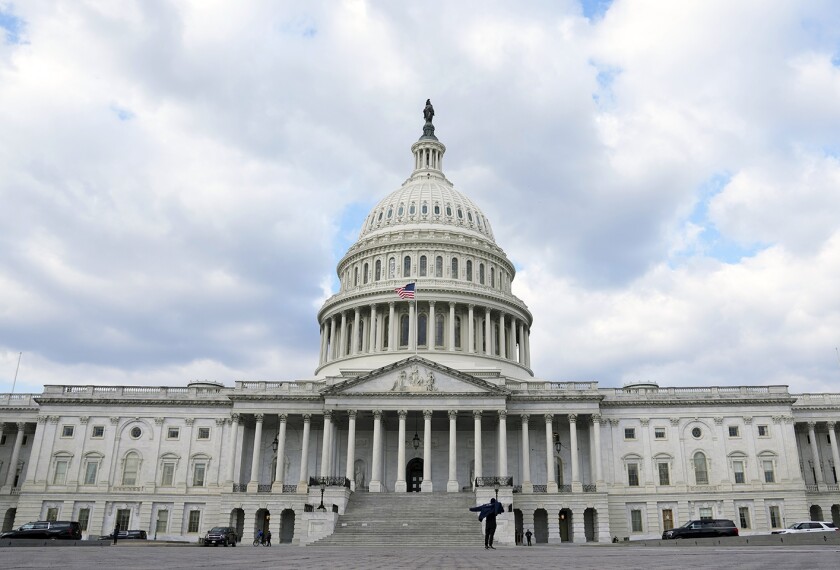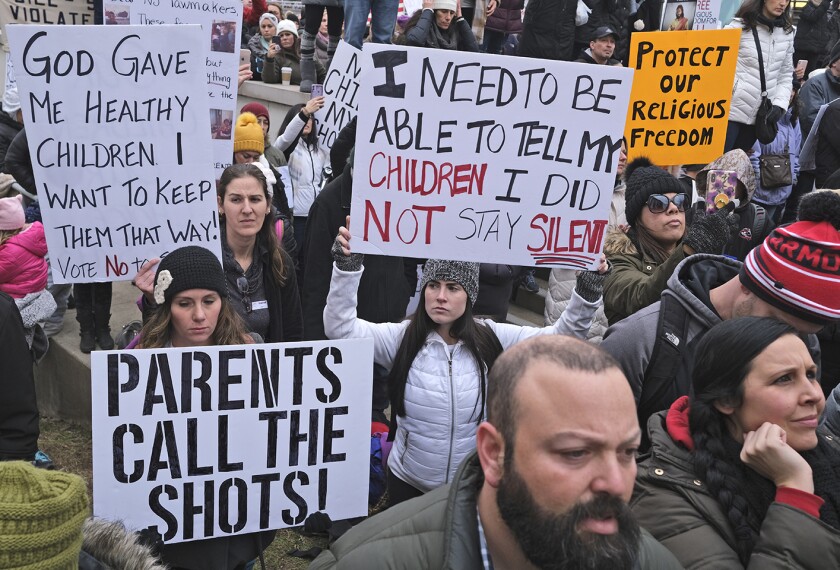Includes updates and/or revisions.
Republican candidates for governor raced to victory in a number of closely watched elections Tuesday, after campaigning on traditional conservative platforms that emphasized a return to local control over education and resistance to what they regarded as state and federal overreach in schools.
In state school superintendents’ contests, GOP candidates also fared well, winning control of several offices that will allow them to play a major role in crafting education policy.
Republicans also made major gains in state legislative chambers, changes that have big implications for the future of school policy and spending.
As was the case in this year’s congressional races, Republicans had been expected to make major headway in state-level elections, and Tuesday’s results bore that prediction out.
In Ohio, Republican John Kasich defeated incumbent Democratic Gov. Ted Strickland, after criticizing his opponent’s education agenda as bureaucratic and expensive.
In Georgia, former Gov. Roy Barnes, a Democrat who made education a major focus of his campaign, lost his bid to return to that office to Republican Nathan Deal, a former congressman.
And in Iowa, incumbent Democratic Gov. Chet Culver was ousted by former four-term Republican Gov. Terry Branstad, who had opposed his rival’s state preschool program.
One of the staunchest critics of recent federal education spending, Texas Gov. Rick Perry, a Republican, turned back former Houston Mayor Bill White after a surprisingly tough campaign. Mr. White had accused the governor of making an enemy of the federal government for political gain.
In the nation’s most populous state, California, Democrat Jerry Brown had better luck, defeating Republican Meg Whitman, who had drawn the opposition of two major teacher unions in the state. Mr. Brown, who governed the state from 1975 to 1983, overcame a massive wave of spending from Ms. Whitman, the former chief executive officer of eBay, who contributed more than $140 million to her campaign.
Fresh Faces
Governors & State Schools Chiefs

This interactive map details the 37 gubernatorial and seven state superintendents races on the ballot and where the leading candidates stand on education issues.
Election-Related Ballot Measures

K-12 funding issues directly or indirectly dominate education-related state ballot measures around the country this election year. This map shows some of the prominent measures.
A total of 37 states held governors’ races on Tuesday, and even with three contests still undecided as of earlier today, Republicans had made some gains.
Of the seats in contention, 19 governors’ offices were held by Democrats going into this election, while 18 were controlled by Republicans.
As of earlier today, GOP candidates had won at least 23 seats and Democrats only 11. One independent, former Republican U.S. Sen. Lincoln Chafee of Rhode Island, won that state’s governor’s race.
Contests were still in play in Minnesota and Connecticut.
Nationwide, Democrats held 26 governors’ offices, pre-election, and Republicans held 24, according to the National Governors Association.
The winning governors in some cases will be working with legislatures that have a new balance of political power as a result of yesterday’s elections.
As of this morning, Republicans had seized a majority from Democrats in 18 state legislative chambers, with five still undecided, said Tim Storey, a senior fellow at the National Conference of State Legislatures, a nonpartisan research organization based in Denver.
Those chambers switching to GOP control include the Alabama House and Senate, the Iowa House, the Maine House and Senate, the North Carolina House and Senate, and the Wisconsin Assembly and Senate, according to the NCSL.
No chamber has switched from Republican to Democratic control as result of the elections, he said.
“The Republican wave in the states is perhaps even stronger than it is at the federal level,” said Mr. Storey.
In all, Republicans will control at least 54 chambers, while Democrats will have the majority in at least 38, with one tied, he said.
Looked at another way, Mr. Storey noted that Republicans will now hold the most seats they’ve had in state legislatures since 1928. In all, 6,115 legislative seats were on the ballot in 46 states.
Meanwhile, seven states hosted elections this fall for state school superintendent; one state chief’s race, in Oregon, was decided earlier this year.
Republicans captured superintendents’ offices in a number of states, in different regions of the country.
In Georgia, Republican John Barge, a school administrator, defeated Democrat Joe Martin and Libertarian Kira Griffiths Willis. In Oklahoma, Republican Janet Barresi, a former school speech pathologist who helped found charter schools in her state, won the superintendents’ contest over Democrat Susan Paddack and Independent Richard E. Cooper. And in Wyoming, Cindy Hill, a former junior high school principal, defeated Democratic state Sen. Mike Massie.
In Idaho, Republican Tom Luna outlasted Democrat Stan Olson, and in Arizona, Republican John Huppenthal, a state senator, won his contest against Democrat Penny Kotterman.
In South Carolina, Republican Mick Zais, a former college president, campaigned on creating tax credits for families to pay private school costs. He defeated Democrat Frank Holleman, who once served as an adviser to former South Carolina Gov. Richard W. Riley when he was U.S. secretary of education.
One of the most closely watched contests played out in California, where state assemblyman Tom Torlakson defeated former school administrator Larry Aceves in the race to replace term-limited schools chief Jack O’Connell. Mr. Torlakson has been supported by two major teachers’ unions, while his opponent had the backing of the Association of California School Administrators.
In the vast majority of states, the winning candidates’ post-election euphoria is likely to fade when they delve into their states’ budget books. At least 46 states faced budget shortfalls heading into fiscal 2011, according to the Center on Budget and Policy Priorities, a nonpartisan research organization in Washington.
“It’s going to be difficult governing,” Mr. Storey said. “It’s going to take a whole lot for us to pull out of the depths we’re in.”
On the state campaign trail, education was “really overwhelmed by the economic anxieties the voters had,” Mr. Storey said. But now victorious candidates would be forced to make hard decisions about K-12 spending, he said, given its large share of state budgets.
Yet in some states, education managed to secure a foothold. In Iowa, Gov. Culver, a Democrat, touted his support for a voluntary preschool program. But his opponent, Mr. Branstad, campaigned against the program, arguing that the state would be better off providing more targeted aid to needy children and families.
The election played out amid an unprecedented flow of federal emergency education spending to the states. Much of that money arrived courtesy of the American Recovery and Reinvestment Act, commonly known as the federal stimulus, which provided $100 billion in education funding. This summer, Congress supplemented that aid with an additional $10 billion through the Education Jobs Fund, a measure designed to stave off thousands of layoffs in the nation’s schools.
One stimulus-funded effort, the Race to the Top program, appears to have had a major influence on state education agendas. Eleven states, plus the District of Columbia, won grants through the $4 billion federal competition, which was designed to promote innovation in schools. Additionally, 34 states approved new education laws or policies during the course of the competition, federal officials say. Many of those changes, such as expanding charter schools and creating new models to evaluate and pay teachers, are popular among Democrats and Republicans at the federal and state level.
Yet the infusion of cash from Washington was criticized by some candidates—mostly conservatives—who complained that the emergency spending gives federal officials too much sway over state and local school policy. For instance, in Texas, Gov. Perry refused to have his state apply for Race to the Top, though his state has accepted billions of dollars in stimulus aid, including money for education.
The winning Race to the Top states have promised to make ambitious changes to school policy, and the impact of the election on those plans remains unclear. Nine of the 11 winning Race to the Top states hosted governors’ races on Tuesday. Another winner, the District of Columbia, will have a new mayor, with Vincent C. Gray, who ousted incumbent Adrian M. Fenty during the city’s Democratic primary.
In Florida, Democratic gubernatorial candidate Alex Sink, who narrowly lost to Rick Scott, had voiced strong support for her state’s winning, $700 million plan, which calls for increased graduation rates and for school districts to develop merit pay plans, among other steps. By contrast, Mr. Scott, vowed to “refuse temporary funding from the federal government that creates permanent spending in Florida” in his economic plan, while not referencing Race to the Top, specifically. Ms. Sink conceded the race Wednesday morning.
It was hard to imagine, however, that the Republican candidate would oppose implementation of Race to the Top, given the priorities laid out in that plan, said Daniel A. Smith, a professor of political science at the University of Florida. He spoke before the election results were known.
“It appeals to conservatives, and they’re going to need those dollars,” Mr. Smith said.
The Ohio Republican gubernatorial candidate, Mr. Kasich, sharply criticized incumbent Gov. Strickland’s education funding and policy agenda. But Mr. Strickland countered by saying that his plan for schools was a core piece of the state’s successful, $400 million Race to the Top proposal, and that his opponent’s agenda would imperil the state’s plan.
Retreating from his education blueprint, Mr. Strickland said at a candidates’ forum before the Dayton Daily News newspaper, “could put in serious jeopardy our receiving these resources, as quite frankly, I think it should, because we would not have met the obligations and the commitments that we put forth in our application.”






